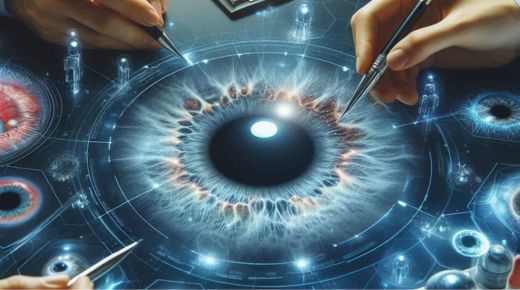Ocular migraines can be confusing and distressing. These episodes often involve visual disturbances, like flickering lights or zigzag patterns. While they usually improve on their own, understanding the role of ophthalmologists is key. They help diagnose and manage these migraines. An ophthalmologist’s expertise ensures that any underlying eye issues are addressed, which can improve overall eye health. Whether it’s routine eye care or specialized procedures, like Peoria blepharoplasty, ophthalmologists play a vital part in maintaining and restoring vision. Knowing when to seek their help can make a big difference.
What Are Ocular Migraines?
Ocular migraines are a type of migraine that affects vision. They usually involve temporary vision loss or visual disturbances in one eye. These episodes can last from a few minutes to about an hour. While they can be alarming, they are usually harmless and resolve without lasting effects. However, frequent episodes can interfere with daily activities and should be evaluated by a professional.
The Role of an Ophthalmologist
An ophthalmologist is a medical doctor specializing in eye and vision care. Unlike optometrists or opticians, ophthalmologists can diagnose and treat a wide range of eye conditions, perform eye surgery, and prescribe medication. Their training allows them to identify whether ocular migraines are part of a broader health issue or linked to other eye conditions.
Diagnosis and Management
When diagnosing ocular migraines, ophthalmologists consider several factors:
- Medical history and symptoms
- Eye examinations
- Imaging tests if needed
These steps help ensure an accurate diagnosis and effective management plan. The main aim is to rule out other serious conditions, like retinal detachment or stroke, that can mimic migraine symptoms. Consistent follow-up with an ophthalmologist can help manage these episodes and improve quality of life.
Treatment Options
Treatment for ocular migraines may not always involve medication. In many cases, lifestyle changes can help reduce the frequency of episodes:
- Stress management techniques
- Regular sleep patterns
- Avoiding known triggers
If medication is needed, an ophthalmologist may prescribe drugs that help prevent migraines or relieve symptoms. This can include anti-inflammatory medication or, in some cases, medications used to treat regular migraines.
Comparison of Migraine Types
| Migraine Type | Symptoms | Typical Duration |
| Ocular Migraine | Visual disturbances, temporary vision loss in one eye | Minutes to one hour |
| Classic Migraine | Headache, aura, nausea | Several hours to days |
Preventive Care
Regular visits to an ophthalmologist can help detect early signs of eye-related issues. Prevention is often the best treatment. Routine care is more effective after treatment. Ophthalmologists can offer guidance on maintaining eye health and preventing future attacks.
When to Seek Help
It’s important to consult an ophthalmologist if experiencing visual disturbances or frequent migraines. Early intervention can help manage symptoms and prevent complications. The National Eye Institute provides resources and information about ocular migraines and eye health.
The Bigger Picture
Ophthalmologists play a crucial role in managing ocular migraines. They ensure that eye health is maintained and that migraines do not impact vision long-term. By working with an ophthalmologist, individuals can take charge of their eye health and reduce the impact of migraines on their lives. For more information on eye health, visit the Centers for Disease Control and Prevention’s Vision Health Initiative.




